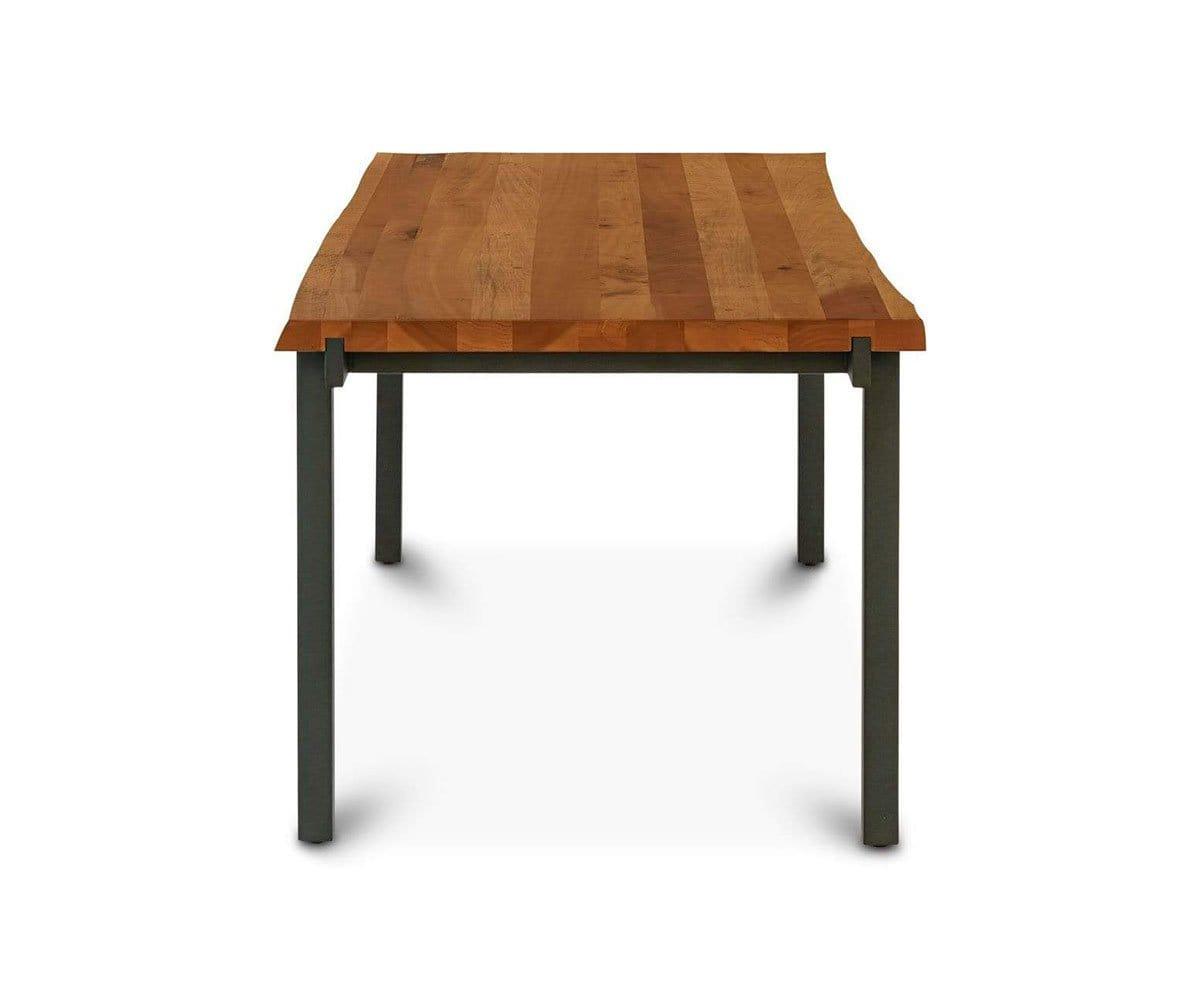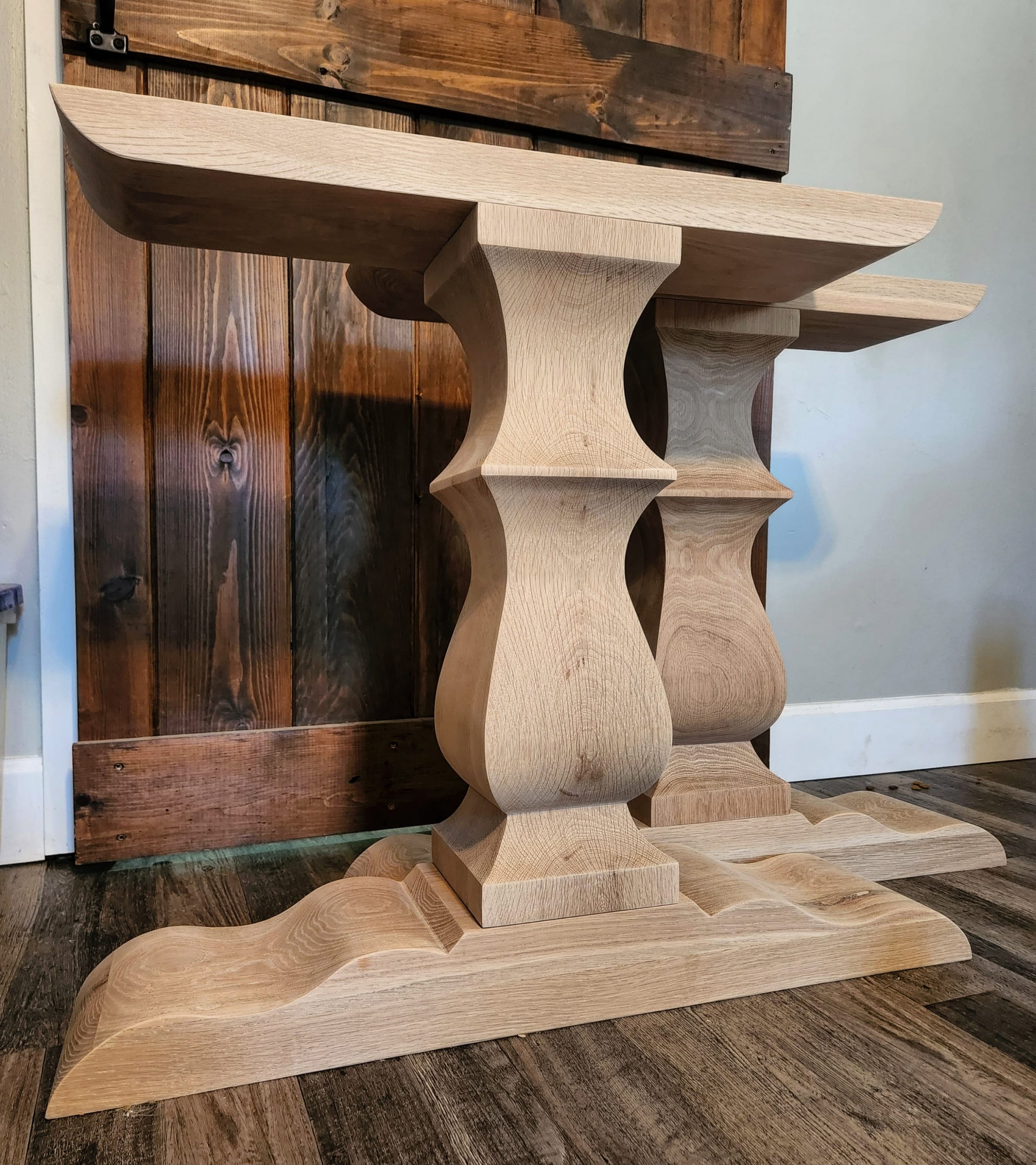Include Strength and Appeal Using Solid Dining Table Legs Wood Parts
Include Strength and Appeal Using Solid Dining Table Legs Wood Parts
Blog Article
Secret Aspects to Maintain in Mind for Table Legs Timber Choices
When picking timber for dining table legs, a number of crucial variables call for careful consideration to guarantee both functionality and visual allure. The choice of timber type, defined by its longevity and unique grain patterns, plays a crucial function in the total design and durability of the item. In addition, one have to ponder maintenance needs and the environmental ramifications of sourcing products. As these elements link, they substantially affect the last outcome of your table. Nonetheless, recognizing the nuances of each element can be intricate, leading to important choices that merit further exploration.
Wood Kind and Qualities
When selecting timber for dining table legs, it is necessary to comprehend the one-of-a-kind qualities of numerous timber types. Different timbers supply distinctive advantages and negative aspects, influencing both the resilience and aesthetic appeal of the ended up product.
Oak, recognized for its excellent durability, additionally includes a famous grain that can include character to the table. Cherry timber, with its rich color that grows over time, offers an elegant appearance however may call for even more upkeep to avoid scratches.
On the other hand, softwoods like pine and fir are extra economical and less complicated to work with, yet they are less durable than woods. Pine is light-weight and features a cozy, rustic appearance, making it a favored selection for informal dining settings. It is extra prone to scratches and damages.
Comprehending these qualities will assist in making an educated decision to make sure the legs of the table meet both useful and aesthetic requirements.
Grain Patterns and Aesthetics
The wood's grain is not just an aesthetic attribute; it conveys a distinct personality and beauty to each item. Different timber species show distinct grain patterns, ranging from the straight lines of maple to the intricate swirls of oak and the striking number of walnut.
Moreover, the alignment and range of the grain can influence the regarded size and elegance of the table. As an example, bigger, a lot more pronounced grains might lend a bold, remarkable effect, while finer, subtler grains can produce an improved, understated look. In addition, the finishing process can additionally improve these patterns, stressing the natural charm of the wood and bringing out rich shades.
Inevitably, the option of grain pattern need to harmonize with other layout aspects, such as the table top and surrounding furnishings, making sure a natural aesthetic that elevates the dining experience. Thoughtful option of wood grain not only adds to the table's charm but also shows the owner's preference and style.
Sturdiness and Strength
The resilience and strength of dining table legs are paramount considerations for guaranteeing longevity and security in any kind of dining space. Selecting the right wood is essential, as different types show differing levels of resilience.

Ultimately, buying top notch timber and durable construction methods will yield an eating table that stands the test of time, while providing a reputable foundation for many meals shared amongst family members a knockout post and friends. Prioritizing toughness and toughness makes certain that your eating table continues to be useful and cosmetically pleasing for many years to come.
Maintenance and Care
Correct upkeep and care are vital for preserving the longevity and toughness of table legs made from timber. Regular cleaning is vital; utilizing a soft, damp fabric ensures that dust and particles do not gather, which can cause scratches and dullness. It is recommended to avoid harsh chemicals or unpleasant products that can harm the finish.
In addition, applying a suitable timber polish or wax periodically can help maintain the shine and safeguard the wood from dampness and spills. It is crucial to comply with the look at here manufacturer's referrals pertaining to the type of product to utilize, as particular finishes might respond adversely to details chemicals.
Humidity and temperature level fluctuations can additionally impact wood table legs, causing them to warp or fracture. It's ideal to put the table far from straight sunlight and heat resources. Resolving these promptly can avoid more damage. if the table legs have any kind of damages or scrapes.
Finally, occasionally checking the joints and screws for tightness is very important to maintain structural honesty (Dining Table Legs Wood). By adhering to these maintenance methods, house owners can guarantee their wood eating table legs remain appealing and useful for many years to find
Environmental Factors To Consider
When selecting wood for dining table legs, it's necessary to take ecological factors to consider right into account. The sourcing and sustainability of timber are paramount in lessening eco-friendly influence. Choosing wood from licensed sources, such as those endorsed by the Woodland Stewardship Council (FSC), guarantees that the wood is gathered responsibly, advertising woodland conservation and biodiversity.

Moreover, regional sourcing of timber lowers transport exhausts, sustaining neighborhood economic situations while lessening environmental impact. It is also advisable to be knowledgeable about the timber's therapy and completing processes, as particular chemicals can be damaging to both human health and the environment. By focusing on lasting wood options, consumers can add to environmental conservation while enjoying the resilience and beauty of their table legs.
Conclusion
In final thought, choosing wood for eating table legs necessitates cautious consideration of numerous aspects, including wood types, grain patterns, and resilience. The aesthetic allure of one-of-a-kind grain patterns can boost the general design, while the toughness of hardwoods ensures long life. Maintenance requirements and ecological sustainability further influence timber options, stressing the importance of sourcing from licensed or reclaimed materials. A notified option procedure web inevitably contributes to a functional and aesthetically enticing dining room that straightens with sustainable techniques.
When selecting wood for eating table legs, numerous critical factors call for careful consideration to guarantee both capability and aesthetic appeal.Appropriate maintenance and treatment are vital for protecting the longevity and strength of dining table legs made from timber.When picking timber for dining table legs, it's crucial to take environmental factors to consider right into account. By focusing on sustainable timber selections, customers can add to environmental preservation while enjoying the longevity and charm of their dining table legs.
In verdict, selecting wood for dining table legs requires cautious factor to consider of different factors, including wood kinds, grain patterns, and durability. Dining Table Legs Wood.
Report this page